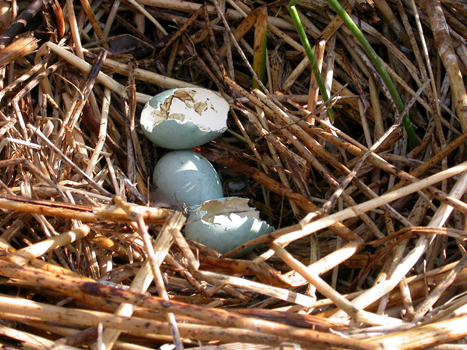Recent studies demonstrated that the common pyrethroid insecticides are present in aquatic biota tissues. In this study, 123 samples of unhatched eggs of 16 wild bird species collected from 2010 to 2012 in Doñana National and Natural Park were analysed to determine 13 pyrethroids. This study represents the first time that pyrethroids are detected in tissues of terrestrial biota, 93% of these samples being positive to those pollutants. Levels of total pyrethroids ranged from not detected to 324 ng g?1 lw. Species with diets based on anthropogenic food showed higher levels of pyrethroids and lower values of ?15N. Finally, the isomers of pyrethroids were characterized and some isomeric- and enantiomeric-specific accumulations were discerned. In particular, tetramethrin and cyhalothrin showed an enantiomeric-selective accumulation of one enantiomer, highlighting the need to assess toxicological effects of each enantiomer separately to be able to make a correct risk assessment of pyrethroids in birds. Attempts have been made to find relationships between pyrethroid levels and parameters such as stable isotopes and feeding habits. These relations suggested anthropogenic factors (most probably food from garbage dumps and agricultural runoff) as the main source of high levels of pyrethroid contamination in the sampled avian species. Because of that awareness campaigns for the local population as a way to decrease pyrethroid contamination in this area are suggested. Corcellas et al (2017) Pyrethroid insecticides in wild bird eggs from a World Heritage Listed Park: A case study in Doñana National Park (Spain). Environm Pollution 228, 321–330, DOI 10.1016/j.envpol.2017.05.035


 Las altas temperaturas están provocando que las lagunas y las marismas de Doñana pierdan agua rápidamente
Las altas temperaturas están provocando que las lagunas y las marismas de Doñana pierdan agua rápidamente




